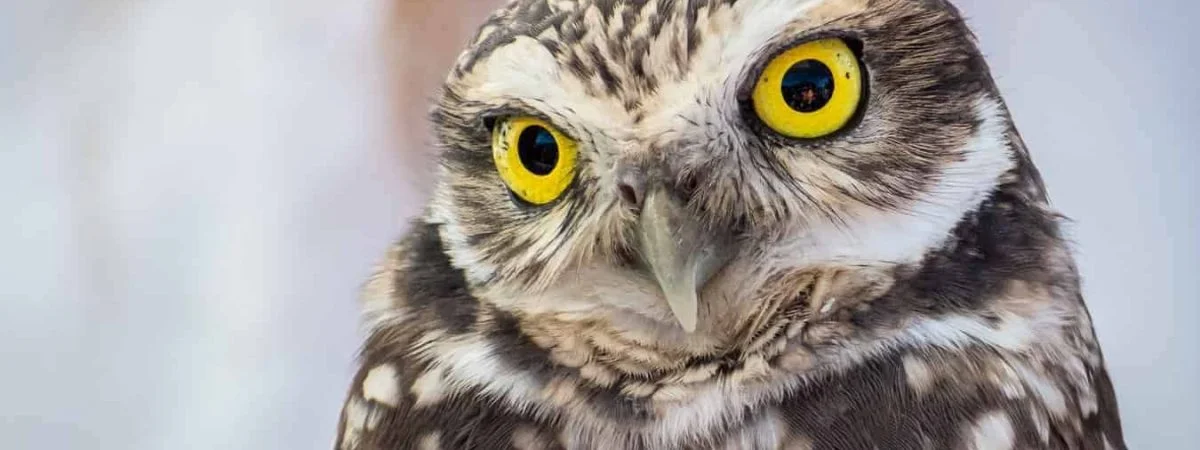
Texas is a southern state and you can come across 14 different species of owl here.
These species are:
- Barn Owl
- Flammulated Owl
- Western-Screech Owl
- Eastern-Screech Owl
- Great-Horned Owl
- Snowy Owl
- Northern Pygmy Owl
- Ferruginous Pygmy Owl
- Elf Owl
- Burrowing Owl
- Barred Owl
- Long-Eared Owl
- Short-Eared Owl
- Northern Saw-whet Owl
Want to learn more? This National Geographic Book on Owls is a great read!
The Great-Horned Owl is the most common and widespread owl across the state of Texas, and they can be seen year-round.
Texas has a mostly sub-tropical climate with a small section in the north west having a continental climate. This southern state has very hot and humid summers.
There are 80 different state parks across the whole of Texas and there are only 2 national parks.
One of these national parks, the Big Bend National Park, is a favourite spot amongst bird watchers and appears to be a prime location for owls to nest.
Now that we’ve looked at what owls can be seen in the state, lets look at these different species in more detail and look at where specifically they can each be found.
Want to attract Owls to your yard? Take a look at our article!
What Owls can be seen in Texas?
Table of Contents
1. Barn Owl
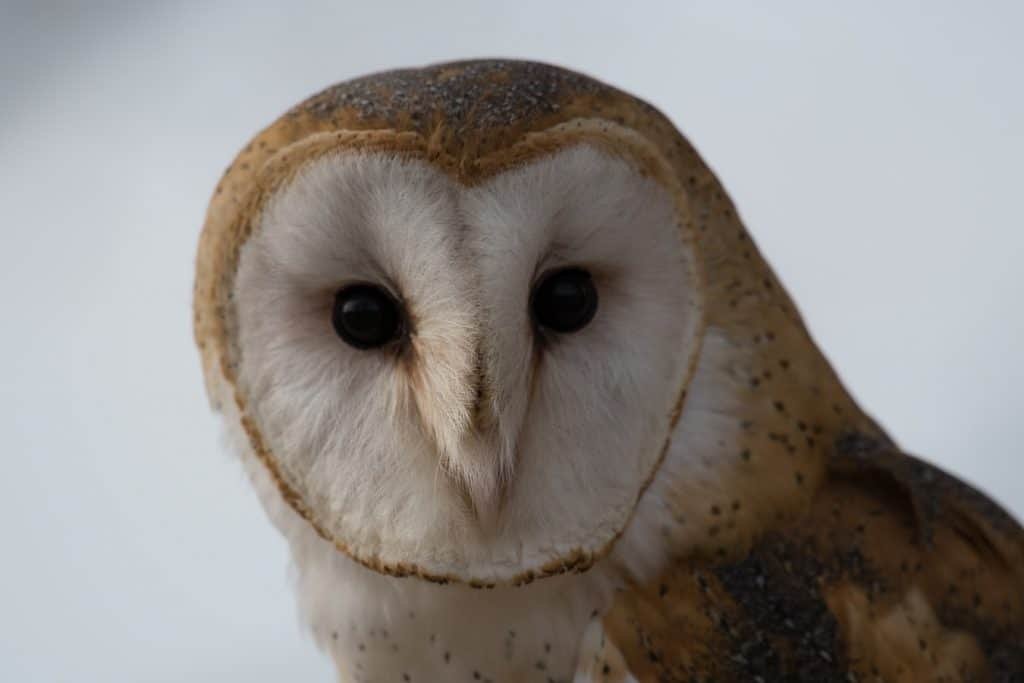
Wingspan
107 to 110 cm
Weight
430 – 620 g
Life Expectancy
Up to 4 years
Diet
Voles, Shrews & Mice
Barn Owls are medium sized owls with pale feathers. These feathers are a mix of buff and grey on both the head and their wings.
During the daytime these colours are more noticeable whilst at night they can appear completely white.
These birds can be found across 48 states in America and will occasionally stray into southern Canada.
They prefer open country such as grasslands. These birds are monogamous, and many barn owls appear to mate for life, although there have been some conflicting reports that say males will mate with multiple females.
Males will bring food to the females as she gets the nest ready for incubation.
These birds are protective of their nests, but they happily share hunting grounds with others of their species.
These birds can be seen year-round in the state and they are permanent residents of Texas.
They will make their nests across all areas of Texas, usually at high elevations of up to 13,000ft.
These birds are also not opposed to urban areas and have been spotted quite a few times in city areas.
The Big Bend National Park is also a good place to try and see one of these birds.
2. Flammulated Owl
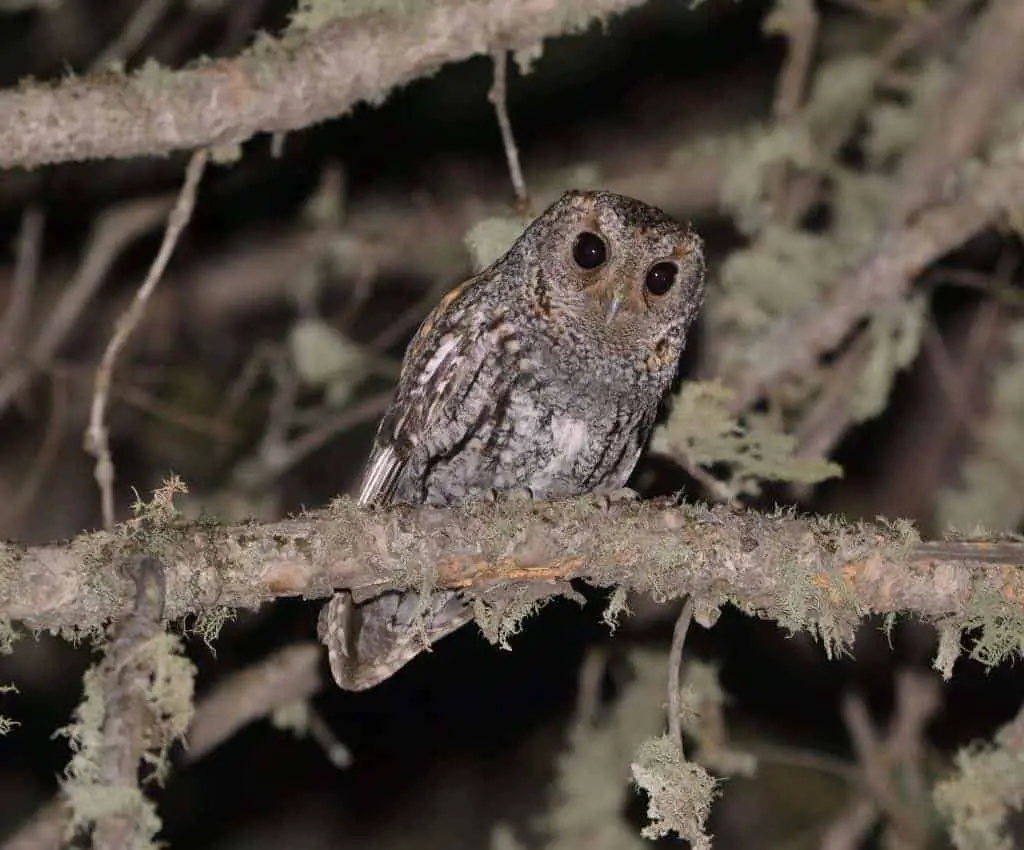
Wingspan
14inches
Weight
60g
Life Expectancy
8 years
Diet
Mostly insects
The Flammulated Owl is one of the smaller owl species and have grey, brown and rusty coloured feathers covering their bodies.
These feathers work extremely well at camouflaging this bird against its common background of bark trees.
Around 3 quarters of these owls will form long term pairing bonds, and those that don’t are still monogamous during the breeding seasons.
These owls keep territories of 5-6 acres and are quite defensive of their territories and will chase others off.
That being said, it is rare for a full fight to occur between two individuals.
You are most likely to see these birds in areas of forests, such as coniferous forests, and whilst their wintering behaviour is not well studied it is believed that they primarily stay in Mexican forests for these cold months.
This species of owl is not a year-round resident of Texas and is only seen in the state during their migratory period, so your best chance to see one in Texas is in the winter months.
Even during the winter, they are not seen across the whole of the state, they are only found in the far west regions of the state.
3. Eastern Screech Owl
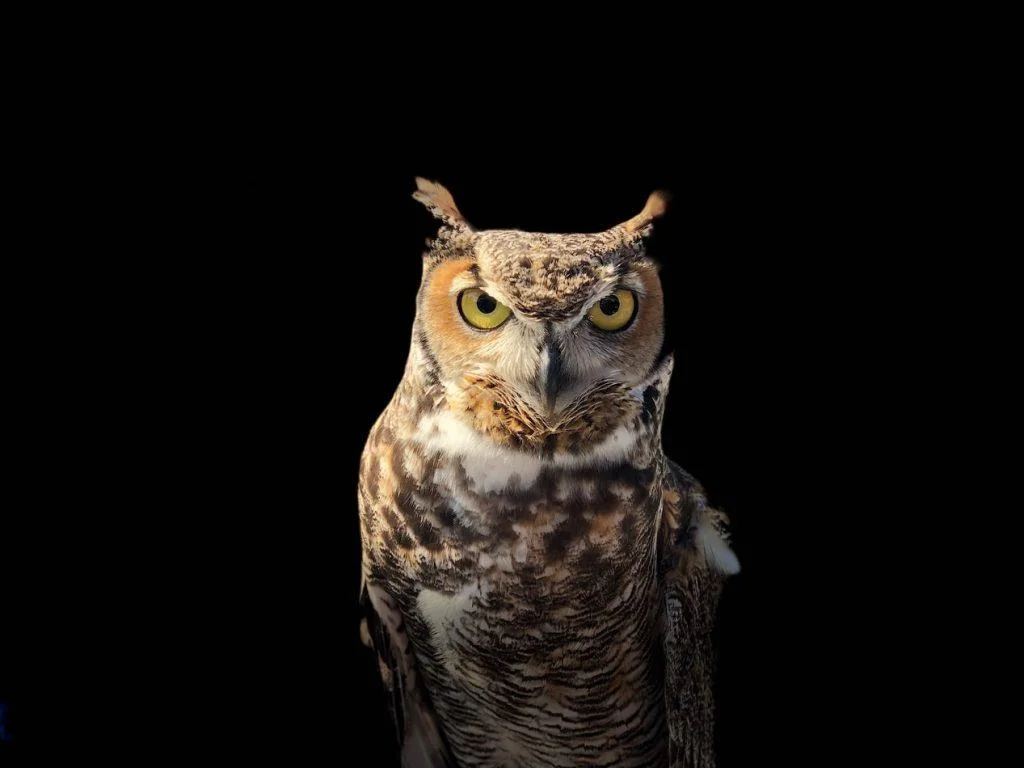
Wingspan
46 to 61 cm
Weight
160 g
Life Expectancy
14 years
Diet
Rats, Squirrels, Rabbits & Skunks
These birds are very similar in appearance to the Western Screech-Owl, they have small and stocky bodies and are covered in grey feathers.
Eastern Screech-Owls will form breeding pairs and will help raise young together.
However, some males have been noted to mate with two females throughout the breeding season and they are not believed to form long term breeding pairs.
Males do most of the work when defending their small territories and will also feed females and their young when they first hatch.
You are most likely to see these birds in dense forests and they have been known to use manmade bird boxes.
They have also been known to nest and breed successfully in city parks and farmlands.
These birds are not migratory and therefore can be seen year-round in the state of Texas.
As suggested by their name, these owls are predominantly found in the eastern areas of the state and are quite abundant there.
There have also been recorded nesting pairs in the central areas of Texas.
4. Western Screech Owl
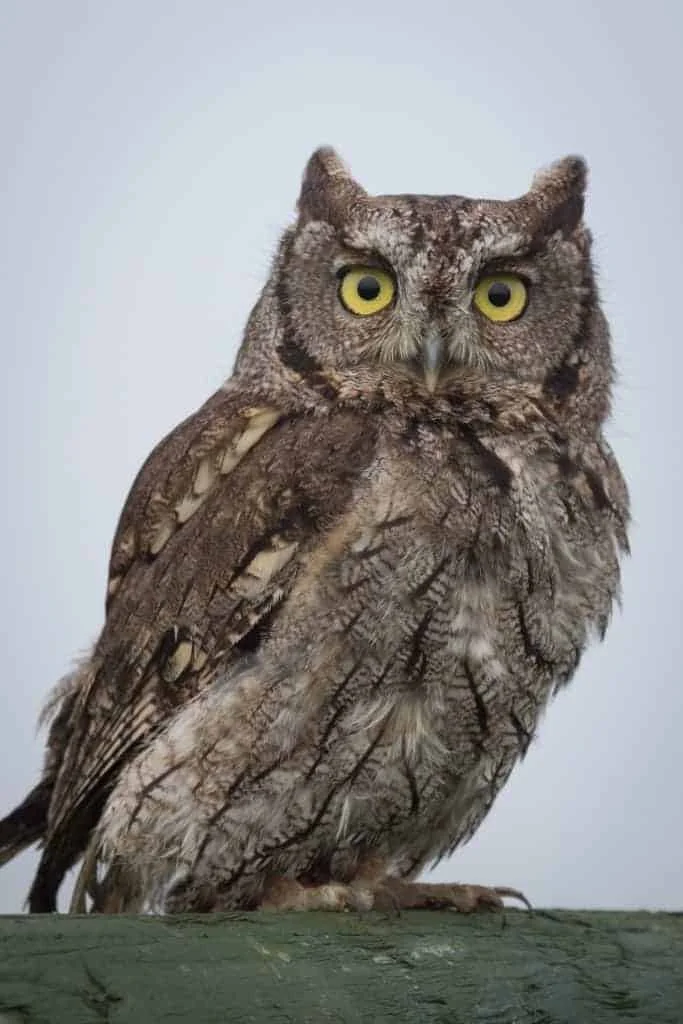
Wingspan
55cm
Weight
143g
Life Expectancy
13 years old
Diet
Insects and small mammals
The Western Screech-Owl is a species of small owl, it has a stocky body and is covered in grey feathers.
You are most likely to see one of these owls in open woodland areas, usually along the edges of canyons. But they have also been known to stay closer to cities in urban areas.
These owls have different mating behaviours than most, whilst they will mate with several individuals, they will still form breeding pairs.
These pairs stay together and raise their young together despite not mating exclusively with one another.
During their courtship, males will bring food to the females who are nesting in cavities and they will also sing duets together in their nests.
Both adults will help protect the nest from other species of birds, such as crows.
These birds do not have migratory patterns so are residents of Texas for the whole year.
However, they can not be seen across the whole of the state and instead can only be seen in the far western regions. There have also been nest sightings in some central areas of Texas.
5. Great Horned Owl

Wingspan
~140cm
Weight
1.4 kg
Life Expectancy
28 years old
Diet
Squirrels, Rabbits & Skunks
These large owls get their names from their long, pointed ear that look like horns on top of their heads.
Their feathers are greyish brown shades and they are thick to cover its stocky body.
These birds are monogamous and form long term breeding pairs, the breeding pairs have been known to stay with each other outside of the breeding season.
They are territorial birds and have a series of hoots that they will use to defend their territory, both members of the breeding pair will help defend their nests.
In fact, these birds are so territorial that they have at times been known to kill other individuals of their own species that stray too close to their territory.
They are often harassed by other species of birds such as crows which will call and peck at them to try and get them to abandon the area and their eggs.
These birds are one of the most abundant species of owls across the whole of the United States.
They do not have migratory patterns and are therefore year-round, permanent residents of Texas.
They can also be seen across all regions of the state, one popular spot for seeing these owls is in the Big Bend National Park.
6. Northern Saw-whet Owl
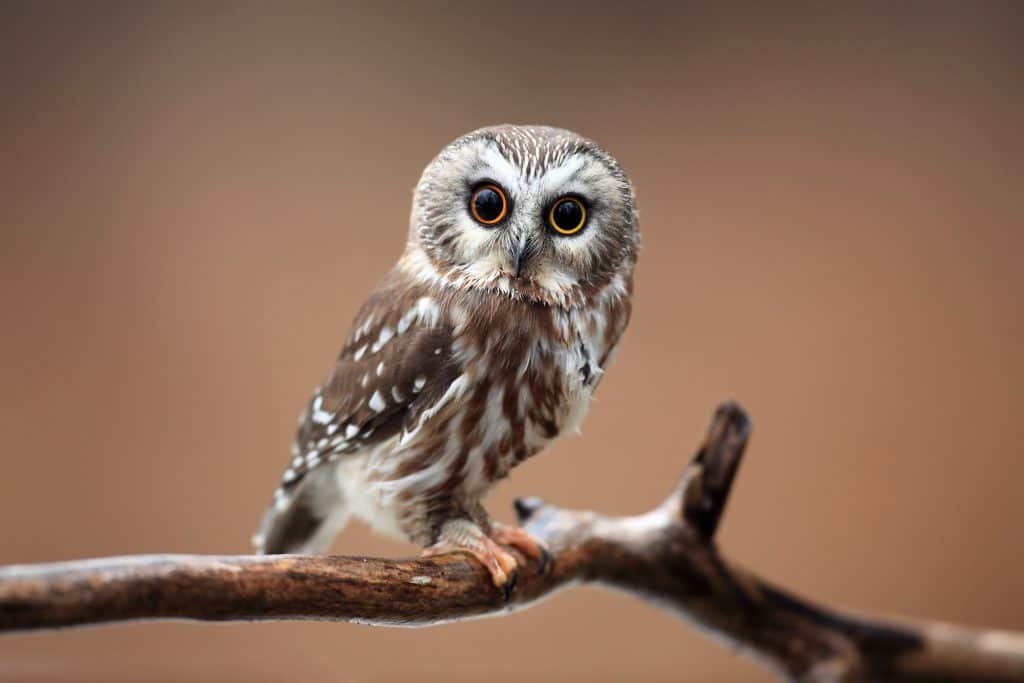
Wingspan
40 - 60 cm
Weight
100 g
Life Expectancy
7 years
Diet
Small birds, young squirrels, voles & shrews
The Northern Saw-whet Owl is a small species of owl that is covered in deep brown feathers.
These small owls make their nests in various forest habitats and roost throughout the day.
Whilst these birds are primarily monogamous, there have been instances of males mating with multiple females during the breeding season.
Their breeding season is from the end of January to the beginning of May which is when you will hear their distinct too-too-too mating call.
When a female enters a male’s territory, he will circle around her in flight 20 times before moving down to her and gifting her with a prey item.
They pair with new mates each year although some breeding pairs will stay with each other to defend their territory outside of the breeding season.
These birds are often preyed upon by larger species of owls.
Whilst these owls are not common, nor permanent residents of Texas, they can be seen throughout a lot of the state.
Sightings of this bird have been most common in the northern half of Texas and they have only been seen outside of their breeding seasons.
You are most likely to see these birds in Texas during the summer months, this is when they will be most active as prey is the most abundant in these times.
7. Short-Eared Owl
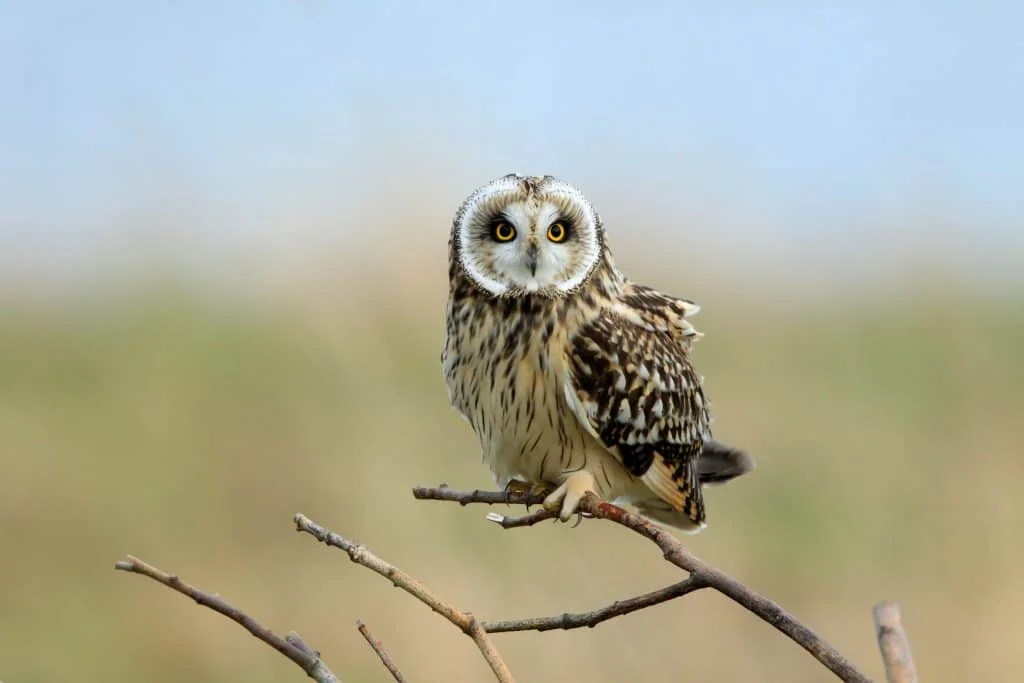
Wingspan
85 to 110 cm
Weight
206–475 g
Life Expectancy
4-12 years
Diet
Voles, Mice, Squirrels
Short-eared owls are a medium sized species of owl that are covered in brown and white spotted feathers.
These owls prefer to stay in areas of open country and low vegetation and will hunt during both the day and the night.
Short-eared owls form loose colonies and are monogamous maters during the breeding season.
It is unknown as to whether they mate for life. Breeding pairs will make their roosts on the ground in areas of tall grass, they only tend to roost in trees during the winter months especially when it is snowy.
Males will feed the females whilst they are incubating the eggs and will also help defend their territory with a series of harsh calls.
These owls are one of the most abundant species of owl across the whole of the United States and therefore are permanent residents throughout Texas.
They can be seen year-round, but they are month active during the breeding season and are least active in the winter months.
Nesting areas have been seen across the whole of the state in open grasslands.
8. Snowy Owl
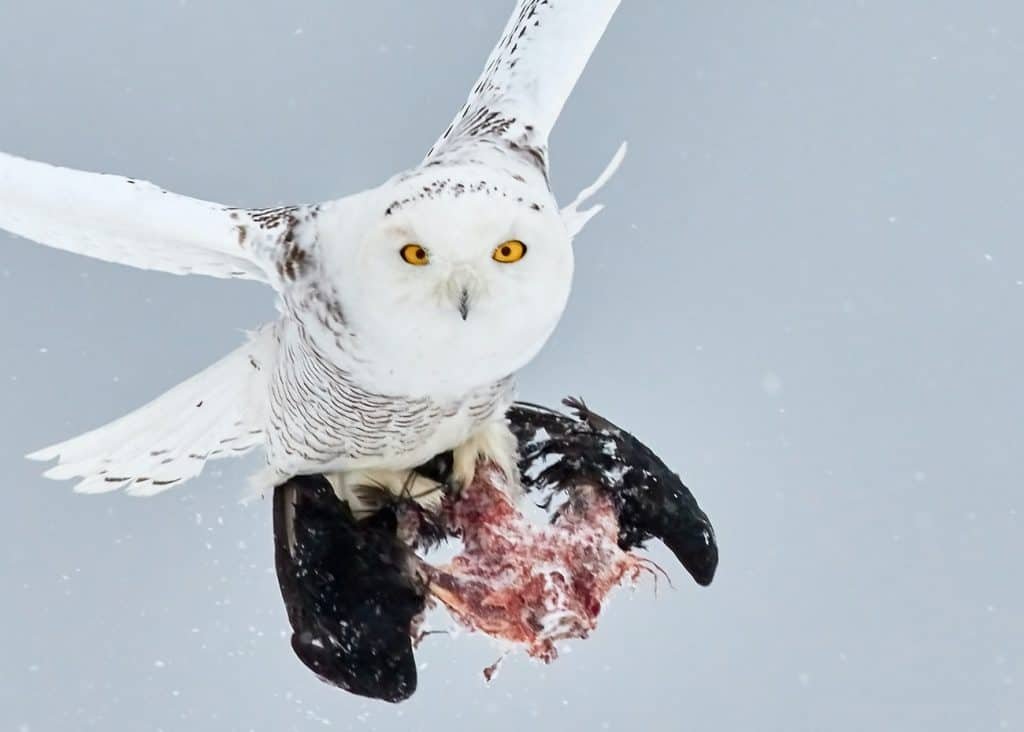
Wingspan
150 cm
Weight
2 kg
Life Expectancy
10 years
Diet
Birds, Rabbits, Fish & Rodents
The Snowy Owl is a large species of owl that is covered in thick white feathers.
Brown and black markings are sometimes visible on these feathers and vary in distribution from one individual to another.
It is not confirmed whether these birds are monogamous, but it is known that males exhibit a unique flight display when courting a female.
They will grasp some prey, such as a lemming, in their talons before performing a very large dive with their wings in a v shape.
These birds are incredibly defensive of their territories and are not afraid to attack if necessary.
There has even been a reported incident of a snowy owl attacking a pair of arctic wolves.
Snowy Owls like wide open spaces with a minimal number of trees, they are most commonly found in tundra habitats and across plains.
They will also perch of high man-made items such as telephone poles during the winter months. This is so that they can observe prey more clearly.
These birds are very rare visitors to the state of Texas, mostly staying in the northern states and countries that have arctic climates.
That being said, there have been interruptive sites of these owls in Texas.
Whilst there isn’t a set series of months where you are likely to see these birds, it is known that all of the sightings have been recorded in the northern areas of Texas.
9. Long Eared Owl
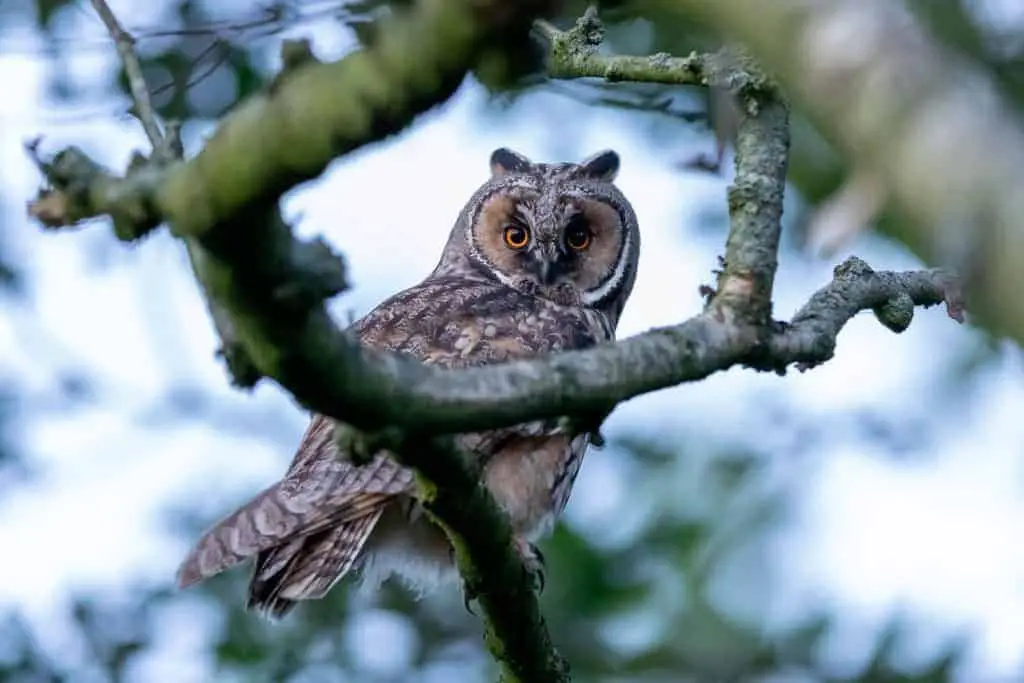
Wingspan
90 to 100cm
Weight
250 g
Life Expectancy
4 years
Diet
Small mammals, mice, rats & rabbits
The Long-Eared Owl, as the name suggests, is known for its long and prominent feathered ears.
Their bodies are covered with black and brown feathers and their faces are orange.
These owls like to roost in dense woodlands and outside of the breeding season will roost in loose colonies of up to 100 individuals.
During the breeding season these colonies will nest near each other, but they will not roost together.
These birds are monogamous, only mating with one individual during the breeding season, although it is not known as to whether they form long term breeding pairs.
Males will court the females by performing a series of complex, zigzag flights whilst producing a mating call.
These birds are only seen in Texas outside of their breeding season and are more abundant in the early winter months.
Whilst they can be seen across the state, they are scarcer in the eastern regions of Texas compared to the western and central areas of the state.
They have not been recorded in the far south of Texas.
10. Northern Pygmy Owl
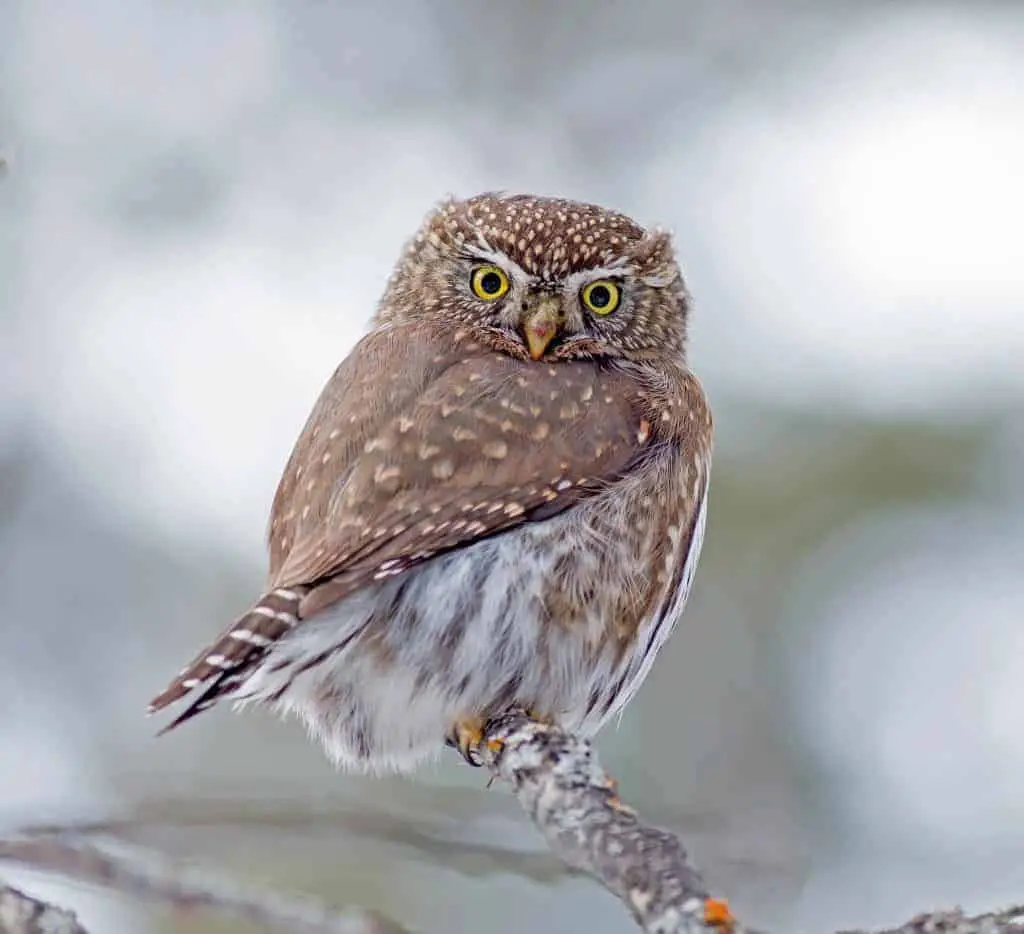
Wingspan
15 inch
Weight
2.25oz
Life Expectancy
6-7 years
Diet
Small birds
The Northern Pygmy-Owl is a tiny species of owl with a spherical body and head.
Its feathers are brown and covered in white speckles and spots. These birds are monogamous, mating with only one individual in the breeding season.
Although it is unknown as to whether they form long term breeding pairs. Males have a tooting call which they use to attract females into their territory.
As these birds are very small, they are often prey for other, larger species of owl.
One result of this predation is that Northern Pygmy-Owls hunt during the day to avoid contact with other owls.
These birds make their nests in forests and have been found in a variety of woodland areas.
During winter months they have also been known to move into suburban towns so that they can hunt songbirds that use garden bird feeders.
These birds do not have a set migratory pattern but will sometimes move further south during the winter.
That being said, they are not frequent visitors in the state of Texas at all and have only been seen during these winter months.
The very rare sightings of this owl have all been recorded to the far west of the state.
11. Ferruginous Pygmy Owl
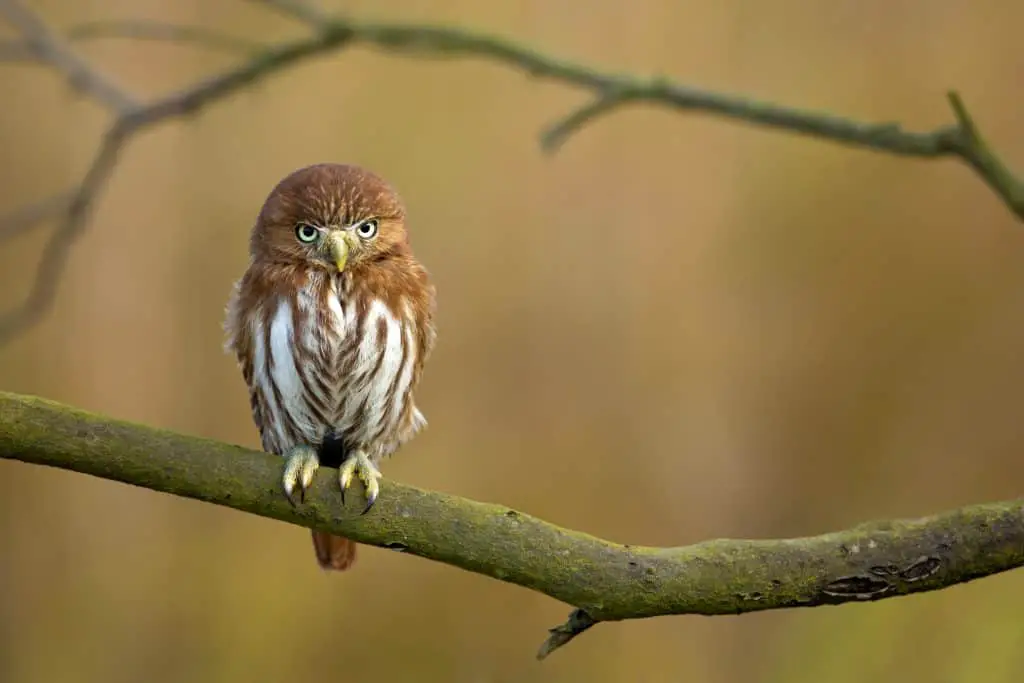
Wingspan
14.5 – 16 in
Weight
2.4oz
Life Expectancy
3 years
Diet
Rodents, insects & birds
The Ferruginous Pygmy-Owl is a very small species of owl that is covered in rich brown and bright white feathers.
You are most likely to see these birds in semi-open woodland areas, staying in various types of forests.
Not much is known about their behaviour, but they have a call that makes a hoo-hoo-hoo-hoo sound.
They are the most abundant species of pygmy owl across the United States and their breeding season starts at the end of winter and ends in early spring.
Breeding pairs will raise one brood per breeding season together.
These birds are crepuscular, which means they are most active at dawn and dusk, and they hunt mostly during the daytime.
You are most likely to see these birds in Texas during their breeding season, which as we established is late winter to early spring.
They are more active during this season and are highly abundant in Texas during these times. They are only found in high nesting numbers in the south and south east areas of the state.
12. Elf Owl
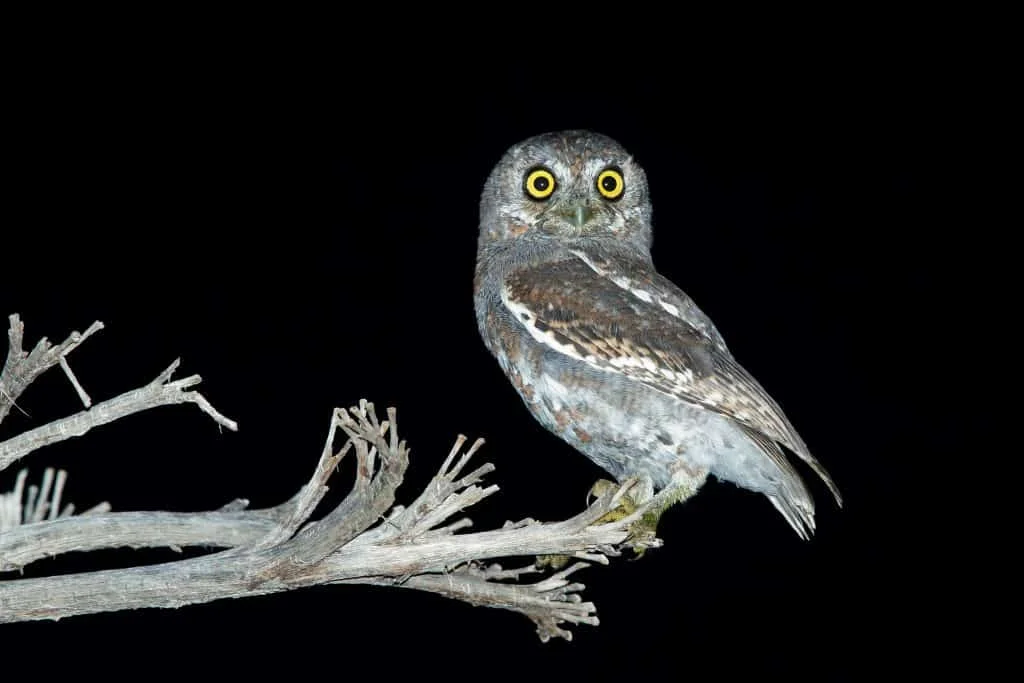
Wingspan
27cm
Weight
40g
Life Expectancy
3-10 years
Diet
Mainly Insects
The Elf Owl is the tiniest owl in the world and is no larger than a mere sparrow.
These birds are most abundant in Mexico and are covered in brown feathers.
These birds will only hunt during dusk and night and you are most likely to see them in open areas of land, such as canyons.
They will nest in natural cavities and also use nests made by woodpeckers in abandoned trees or cacti.
The Elf Owl is monogamous during the breeding season, although it is not known whether they form long term breeding pairs.
Males will sing to the females from their nests to attract them in and once they have courted the male will feed the female whilst she incubates the eggs.
They sing throughout the night to defend their territory from other owls.
These birds breed in Texas and are rather abundant to the south west of the state, they have also been seen in the other southern regions of Texas.
You are most likely to see this bird in their breeding season and in the summer months as they migrate to the south of Mexico during the colder winter months.
13. Burrowing Owl
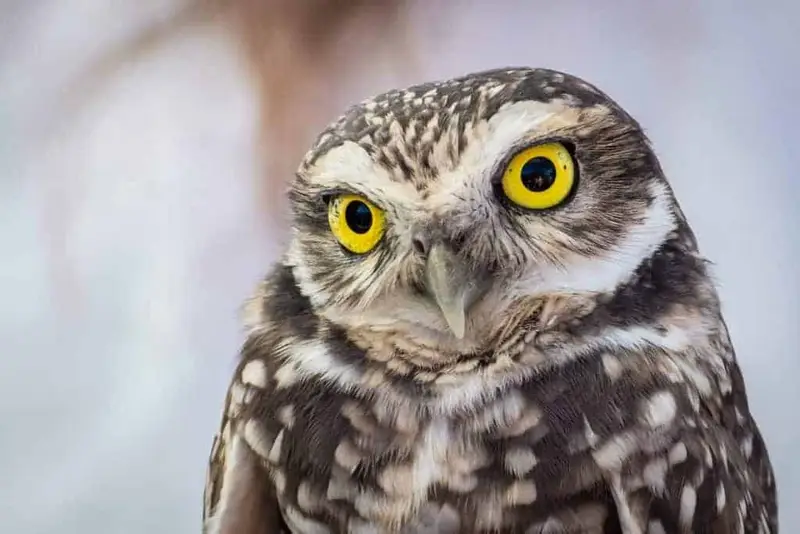
Wingspan
51-61 cm
Weight
140-240 g
Life Expectancy
10 years
Diet
Large Insects and Small Rodents
The Burrowing Owl is a small species of owl covered in brown feathers and speckled with large amounts of white.
You are most likely to see one of these owls in open, treeless areas of grasslands and they are known to hunt throughout both the day and the night.
Burrowing Owls stay together in loose colonies and are monogamous during the breeding season, although it is unknown as to whether they form long lasting breeding pairs.
Females will stay in the burrow to incubate the eggs whilst the male defends their territory with a series of calls and wing displays.
Depending on the region, these birds have been known to stay in Texas year-round. In the west and south regions of Texas, Burrowing Owls are permanent residents.
However, individuals of this species have been known to make their burrows and spend their breeding seasons in the northern regions of the state.
They are not seen to the east of Texas.
14. Barred Owl
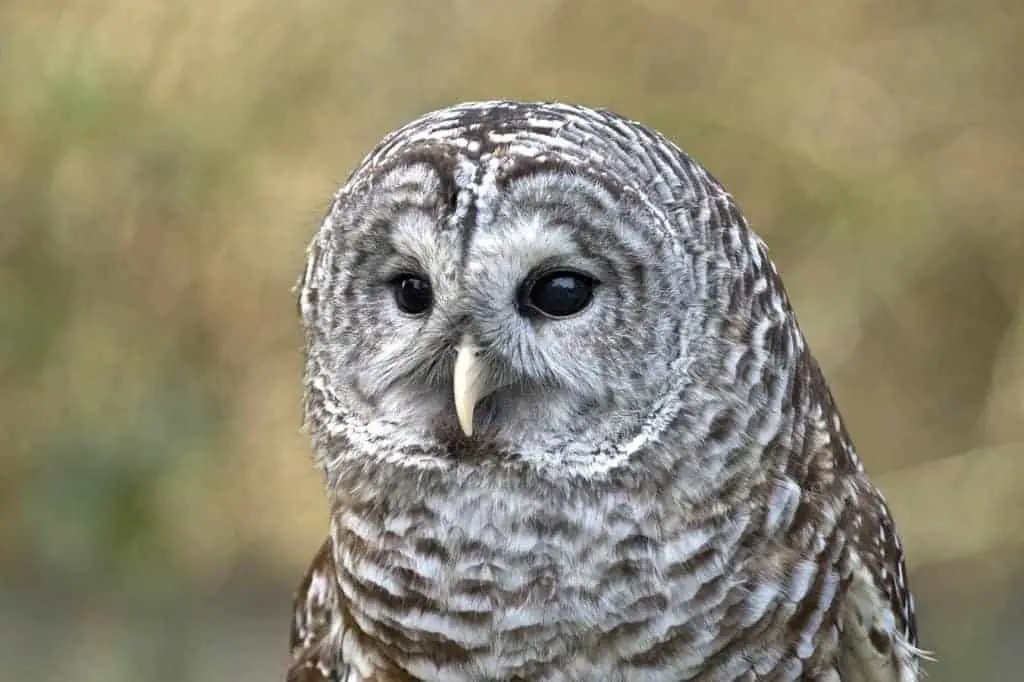
Wingspan
96-125 cm
Weight
468-1,150 g
Life Expectancy
10-23 years
Diet
Small mammals
Barred Owls are a large and stocky species of owl and they are covered with brown and white barred feathers.
These owls habituate in a variety of forest types and stay in ones close to bodies of water, where they are able.
Barred Owls are very territorial and remain so throughout the year, females are the more aggressive ones during the breeding season.
They have been observed using a kind of flight attack where they will collide into other birds, talons first. These birds are monogamous and are believed to mate for life.
They will raise a single brood of eggs together and if there is a predator, one parent will leave the nest to cause a noisy distraction and prevent the young from being attacked.
Barred Owls do not have set migratory patterns and are therefore permanent residents in certain areas of Texas.
You are most likely to see a breeding pair of these owls in the eastern and central areas of the state.
There have also been a small number of nest sightings to the south of the state.

More Articles.
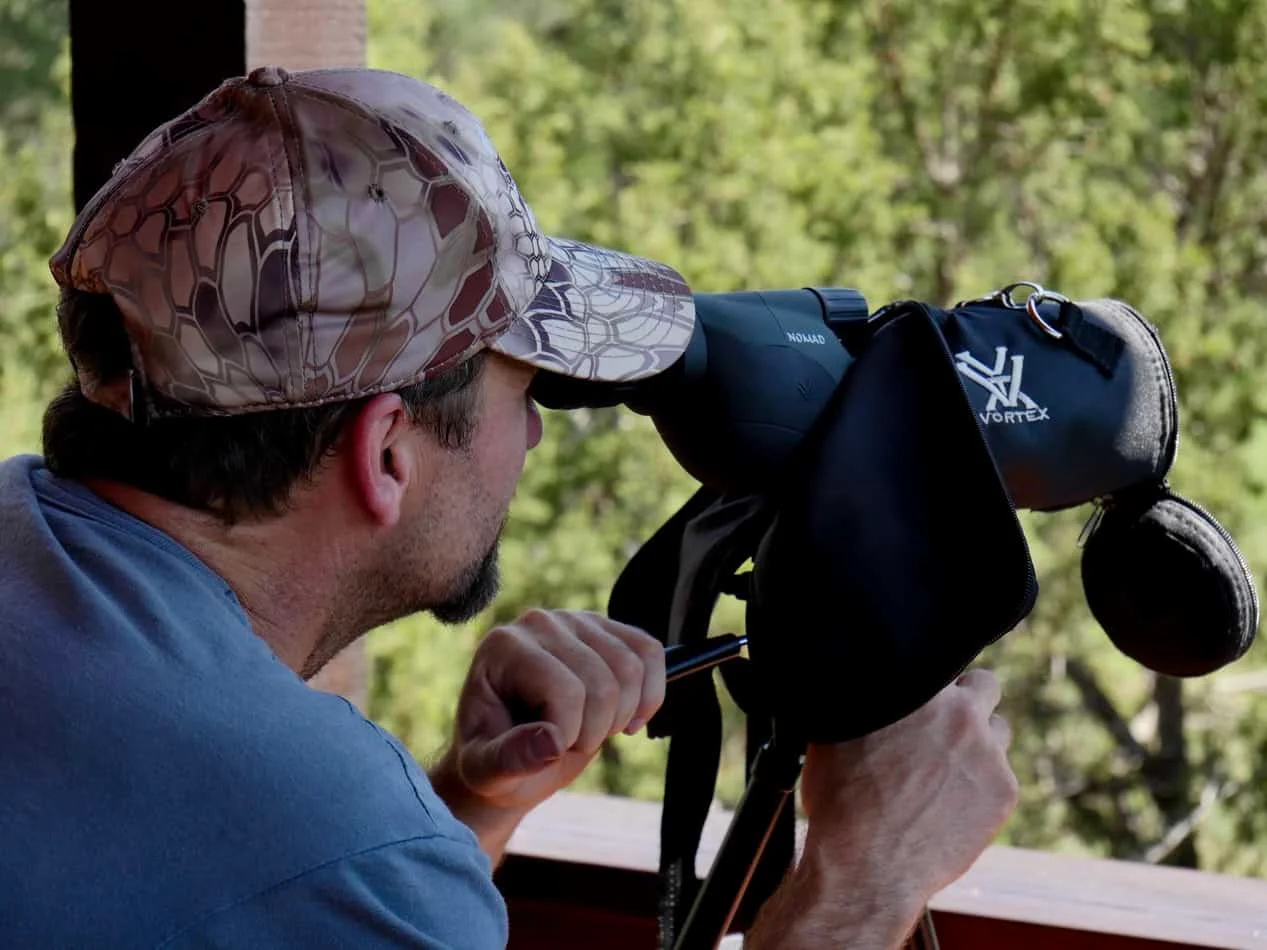
Best Spotting Scopes for Birding 2020
When it comes to birdwatching, you want to make sure that you have the right
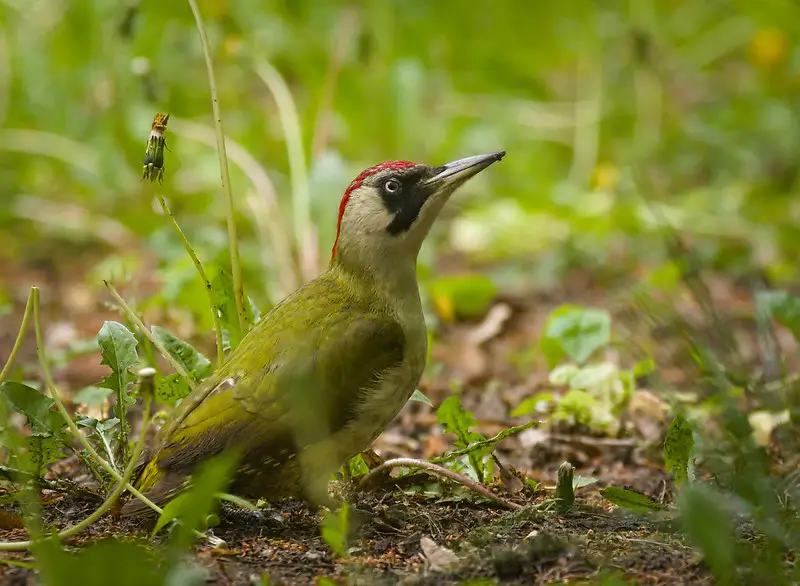
What Woodpeckers can you see in France? (9 Species with Pictures & Sounds)
What woodpeckers can you see in France? There are 9 different species of woodpecker that
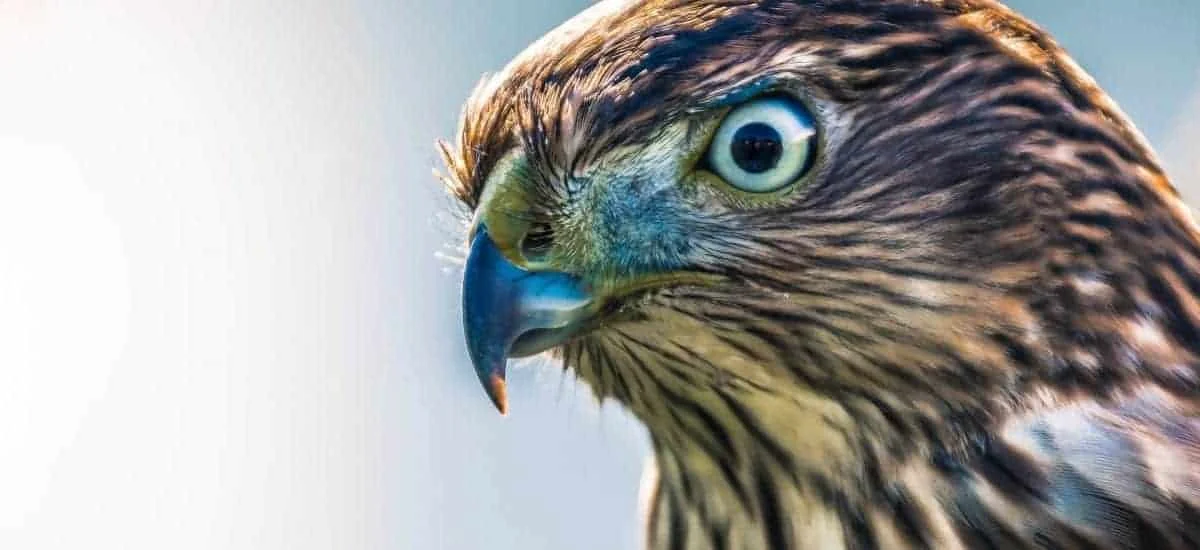
How To Attract Birds Of Prey To Your Yard?
The best way to attract birds of prey into your yard is by creating a

About Us
We are avid bird-watchers who recently retired, allowing us more time to travel the world. Fortunately, we have managed to visit numerous countries around Europe, Asia, and America. Watching and photographing birds has been a passion for many years and we are making the most of the extra time on our hands!
